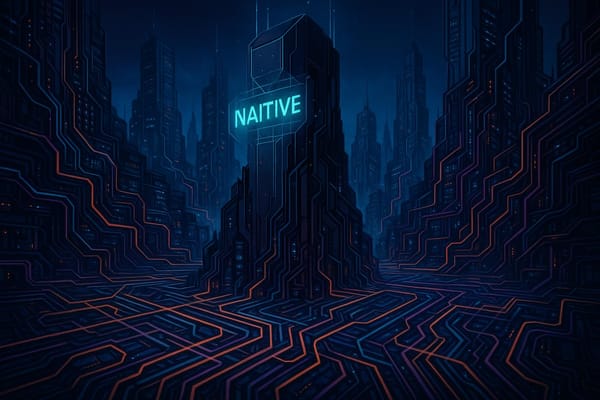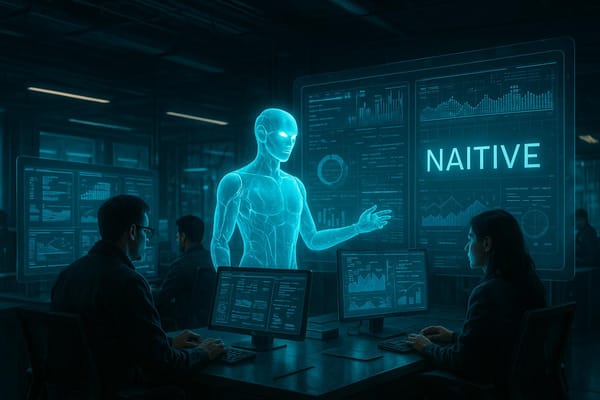Challenges in Real-Time Learning for Multi-Agent Systems
Explore the challenges and solutions of real-time learning in multi-agent systems, transforming industries with autonomous decision-making.

Real-time learning in multi-agent systems (MAS) is transforming industries by enabling AI agents to make autonomous, instant decisions. However, this progress comes with challenges. Here’s what you need to know:
-
Key Benefits of Real-Time Learning in MAS:
- Rapid Adaptation: Systems adjust to new challenges instantly.
- Collaborative Intelligence: Agents share knowledge for better problem-solving.
- Scalable Efficiency: Handles growing workloads with ease.
- Autonomous Decisions: Reduces human involvement in routine tasks.
-
Main Challenges:
- Communication Delays: Data sync issues disrupt operations.
- Scaling Limitations: Adding more agents increases complexity and resource demands.
- Integration Problems: Ensuring smooth cross-platform compatibility is difficult.
- Task Focus vs. Teamwork: Balancing agent specialization with team collaboration is tough.
-
Solutions to Overcome Challenges:
- Delay-Resistant Communication: Use asynchronous processing and predictive models.
- Distributed Learning: Divide tasks among agents for efficiency.
- Standardized APIs: Simplify cross-platform integration.
- Flexible Learning Systems: Combine individual expertise with teamwork.
Quick Example: A Voice AI solution by NAITIVE AI improved customer retention by 34% and conversion rates by 41%, showcasing how well-implemented MAS can deliver results.
Industries Benefiting from MAS:
- Traffic Management: 103% better traffic flow, 67% lower costs.
- Healthcare: Improved patient care and diagnostics.
- Supply Chain: Smarter inventory and logistics management.
MAS with real-time learning are reshaping industries, but success requires addressing these challenges with scalable systems, smooth integration, and ongoing performance monitoring.
LLM Multi Agent Systems Challenges and Open Problems [2024]
Main Challenges in MAS Real-Time Learning
Real-time learning in MAS (Multi-Agent Systems) comes with four key challenges: communication delays, scaling limitations, integration difficulties, and balancing individual expertise with team collaboration. Let’s break these down to see how they affect MAS performance.
Communication Delays and Data Sync Issues
When multiple AI agents work together, even small communication delays can lead to data mismatches and disruptions. In complex operations, keeping data synchronized is critical to ensure the system operates smoothly. This issue becomes even more pronounced as MAS scale up, which ties directly to the next challenge.
System Growth Limitations
Adding more agents and handling increasingly complex tasks put significant pressure on processing power and coordination. As the number of agents and the volume of data grow, the system faces higher resource demands and overhead. Addressing these scaling challenges requires thoughtful system design. Similar coordination problems arise during cross-platform integrations, which we’ll cover next.
Cross-Platform Integration Issues
Getting AI agents to work across different platforms isn’t simple. The main hurdles include:
- Creating shared protocols
- Standardizing data formats
- Ensuring consistent response times across systems
These factors are essential for seamless integration and smooth operation.
Task Focus vs. Team Coordination
Striking the right balance between agent specialization and team collaboration is a tough but crucial task. For example, a NAITIVE AI client reported that their Voice AI Agent Solution improved customer retention by 34% and boosted conversion rates by 41% [2]. This highlights how well-coordinated, specialized agents can enhance overall system performance.
Solutions to MAS Learning Challenges
Addressing communication delays, system growth, integration hurdles, and coordination issues in multi-agent systems (MAS) requires practical and effective strategies. Organizations are implementing solutions designed to improve performance and ensure system stability.
Delay-Resistant Communication Models
To tackle communication delays, protocols now use asynchronous processing and predictive modeling. These techniques, combined with intelligent buffering and priority queuing, help critical data move efficiently even during poor network conditions. For instance, NAITIVE's agent teams reported a 103% efficiency increase, showcasing how these methods strengthen distributed systems.
Distributed Learning Methods
Distributed learning divides tasks among agents, improving system capacity and efficiency. With this approach, systems benefit from:
- Dynamic resource allocation for better workload management
- Parallel processing to handle tasks simultaneously
- Fewer central processing bottlenecks, leading to smoother operations
Standard APIs for Connection
Standardized interfaces ensure agents across different platforms can connect seamlessly. These APIs offer several advantages:
| Feature | Benefit |
|---|---|
| Universal Data Formats | Consistent and reliable data sharing |
| Automated Protocol Adaptation | Simplifies integration processes |
| Real-time Status Monitoring | Provides instant system health updates |
Flexible Learning Systems
Flexible learning systems allow agents to adapt their behavior based on real-time feedback. This balance between individual specialization and team collaboration enhances task performance and system reliability. By combining unique agent skills with coordinated teamwork, these systems achieve better outcomes and greater stability.
Current MAS Applications
Multi-agent systems (MAS) with real-time learning abilities are reshaping how industries operate, improving processes and decision-making. These examples highlight their impact in areas like urban management, healthcare, and logistics.
Traffic Control Systems
Smart traffic management systems use MAS to improve city-wide traffic flow by making real-time adjustments. By processing data from various sources, these systems deliver measurable results:
| Metric | Improvement |
|---|---|
| Traffic Flow Efficiency | Increased by 103% |
| Operating Costs | Cut by 67% |
Autonomous agents manage traffic signals and reduce congestion, leading to smoother urban transportation.
Medical Systems
In healthcare, MAS improves patient care and diagnostics by coordinating tasks and learning from ongoing data. This helps streamline operations and enhances the accuracy of medical insights.
Supply Chain Management
MAS has brought major advancements to supply chain operations. AI-driven agents monitor stock levels, predict demand, and coordinate with suppliers to handle complex logistics and respond quickly to disruptions. This ensures better inventory management and smoother operations.
These examples show how MAS with real-time learning can deliver measurable improvements across different industries.
Conclusion: Next Steps for MAS Learning
The evolution of real-time learning in MAS calls for a focused and expert-guided approach to tackle challenges and improve outcomes. Building on earlier discussions about distributed learning and workflow integration, recent applications highlight the benefits of a well-structured implementation process.
Here are three key factors to consider for success:
| Success Factor | Focus | Expected Impact |
|---|---|---|
| System Architecture | Scalable, distributed learning | 67% cost reduction |
| Integration Strategy | Smooth workflow integration | 103% efficiency improvement |
| Performance Monitoring | Ongoing tracking and refinement | 34% boost in customer retention |
To optimize MAS systems effectively, organizations should prioritize the following:
- Technical Infrastructure: Establish reliable protocols and distributed learning systems.
- Integration Planning: Ensure seamless incorporation into current workflows.
- Performance Metrics: Monitor clear, actionable KPIs to measure system success.
Given the complexity of modern MAS, expert optimization is crucial. By taking a structured approach, organizations can unlock the full potential of MAS for impactful results. For those ready to take these steps, NAITIVE AI Consulting Agency offers the expertise needed to maximize the benefits of real-time MAS learning.
FAQs
How can communication delays in multi-agent systems be effectively managed?
Managing communication delays in multi-agent systems is crucial for ensuring smooth real-time collaboration. Here are some effective strategies:
- Prioritize critical data: Focus on transmitting essential information first to minimize the impact of delays on key operations.
- Implement predictive algorithms: Use machine learning to predict and compensate for potential delays, ensuring agents can act proactively.
- Optimize network architecture: Enhance communication protocols and reduce latency by using faster networks or decentralized frameworks.
By addressing communication delays strategically, multi-agent systems can operate more efficiently and reliably, even in real-time scenarios.
How does real-time learning in multi-agent systems improve efficiency and decision-making in industries like healthcare and supply chain management?
Real-time learning in multi-agent systems enhances efficiency and decision-making by enabling multiple AI agents to work collaboratively and adapt to changing environments. These systems use distributed intelligence to analyze data, identify patterns, and make dynamic adjustments, ensuring optimal performance.
For example, in supply chain management, multi-agent systems can streamline logistics, reduce delays, and improve inventory management. In healthcare, they support faster diagnostics, resource allocation, and personalized patient care. By leveraging real-time learning, businesses can achieve greater automation, accuracy, and strategic insights to stay ahead in competitive industries.
What are the best practices for achieving seamless cross-platform integration in multi-agent systems?
Ensuring smooth cross-platform integration in multi-agent systems involves addressing compatibility, communication, and scalability challenges. Here are a few best practices:
- Standardized Communication Protocols: Use widely accepted protocols like REST APIs or MQTT to ensure agents can communicate effectively across platforms.
- Modular Design: Build agents with modular architectures to simplify integration and reduce dependencies.
- Comprehensive Testing: Conduct rigorous testing in real-world scenarios to identify and resolve integration issues early.
By following these practices, developers can create more robust systems that operate efficiently across diverse environments.




